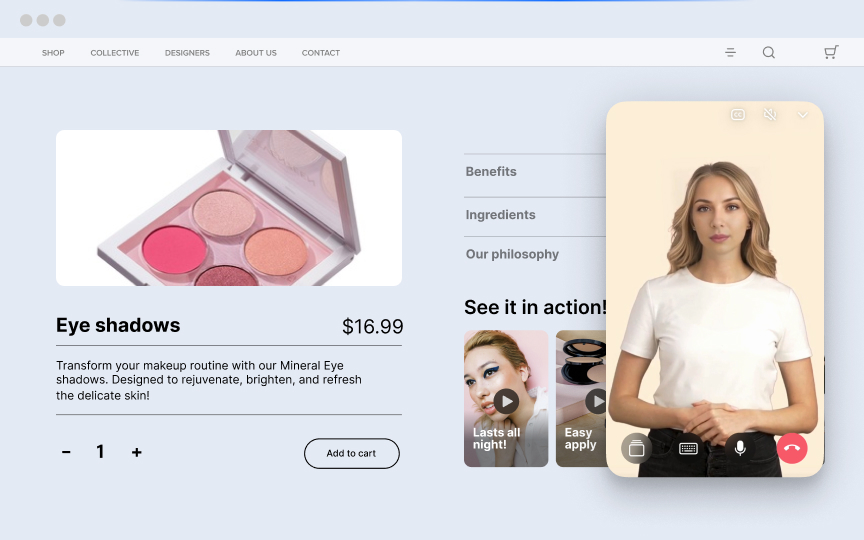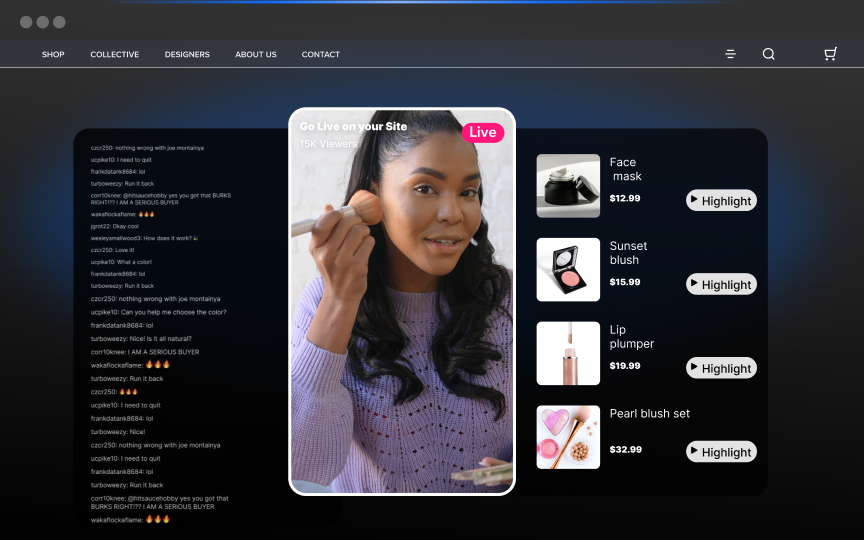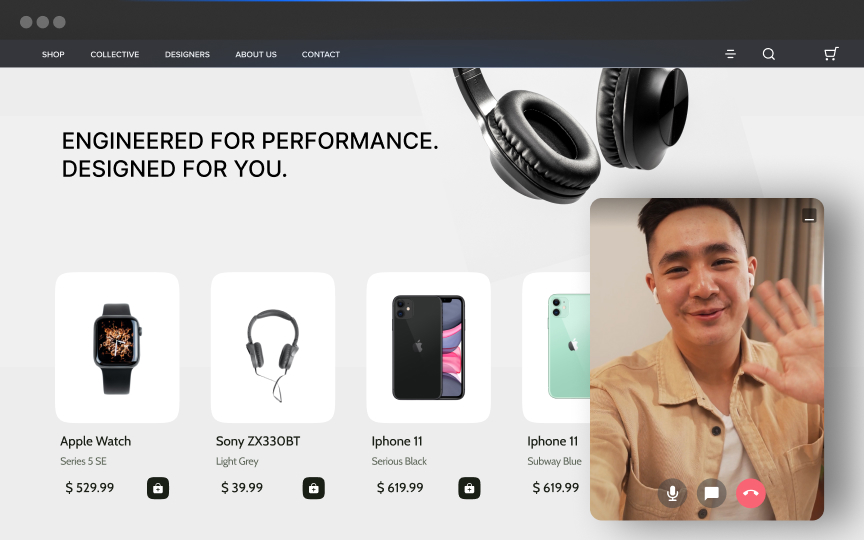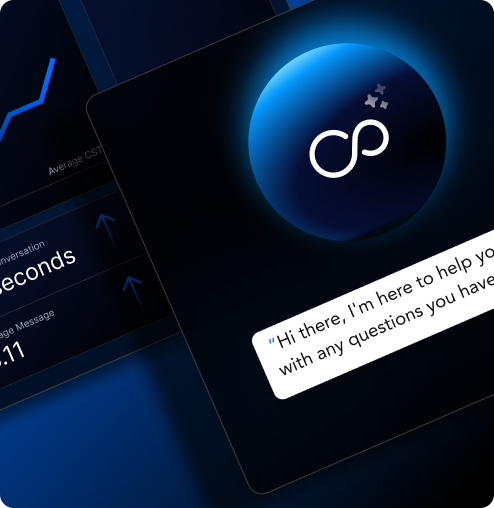Organizations recognized as "advanced" in digital maturity experience revenue growth at five times the rate of their closest competitors, leaving those who lag far behind. This remarkable success stems from disciplined, data-driven transformation efforts rather than the adoption of random tools.
Companies that establish formal digital strategies report an average revenue growth that is 45% higher, demonstrating that a structured approach is significantly more effective than an unstructured one.
We’ll show you how you can align every digital initiative with measurable business outcomes, focusing on key areas that truly drive revenue. From rapid product launches to automated marketing experiments, we will explore the transformative power of customer data platforms, AI-driven personalization, and video commerce.
5 Technologies That Boost Revenue in 2025
In 2025, the technologies driving enterprise growth are those that enhance engagement, accelerate decision-making, and personalize every touchpoint. These innovations are no longer experimental; they’re delivering measurable results at scale.
- AI and Machine Learning: Now core to enterprise strategy, AI analyzes browsing patterns and purchase history in real time, boosting conversion rates by up to 30% through personalized offers, smart pricing, and predictive recommendations.
- Customer Data Platforms (CDPs): CDPs integrate signals from web visits, in-store purchases, and customer service into a single profile, enabling targeted campaigns and lifecycle strategies that increase acquisition and lifetime value.
- Composable Architecture: Modular systems let brands add, test, or replace features quickly, helping teams scale successful initiatives faster and adapt rapidly to shifting consumer expectations.
- Real-Time Analytics: Instant insight into customer behavior, content performance, and inventory trends empowers teams to react in real-time and continuously optimize outcomes.
- AI-Powered Video Commerce: Shoppable videos, interactive livestreams, and mobile-first vertical content now anchor product discovery and drive engagement. Live Q&A and embedded checkout turn video into a full-funnel conversion tool.
How to Map Customer Journeys That Convert
By prioritizing customer journeys, from initial interest to repeat purchases, you can identify friction points and unlock new opportunities for improvement. Start by mapping those journeys to pinpoint where buyers get stuck and streamline the process. Use real-time data to personalize every touchpoint across channels, turning generic interactions into relevant, tailored experiences.
Engaging visual content is key. Rich storytelling on your homepage and social media helps meet rising expectations for immersive, interactive brand experiences. Integrate video where it matters most; interactive clips and shoppable hotspots can turn casual browsing into confident buying, especially in social commerce environments.
Finally, adopt intelligent platforms that connect creativity, data, and seamless checkout. These tools help unify your efforts across the funnel. By focusing on the customer at every step, you create experiences that drive engagement, increase conversion rates, and translate attention into measurable growth.
Automate Operations to Cut Costs and Accelerate Time-to-Market
Accelerate your launch cycles to see immediate revenue impacts. Digital leaders achieve impressive growth by streamlining operations, allowing them to capitalize on opportunities quickly.
Begin by automating repetitive tasks; when software manages data entry and inventory updates, your team can focus on enhancing offers and nurturing customer relationships, key activities that boost average order value. Real-time dashboards provide instant updates on sales, inventory, and campaign performance, enabling quicker decisions and reducing costly errors.
By connecting core systems, you ensure information flows freely rather than getting stuck in silos. A modular architecture enables the easy integration of new tools without requiring extensive overhauls, resulting in faster market launches, lower operating costs, and increased revenue per employee.
Align IT and Marketing Teams for Faster Revenue Results
If your tech plans don't align with revenue goals, even the best tools fail. Keep everyone aligned by bringing product owners, marketers, and engineers into the same planning sessions. Companies that build cross-functional teams into a composable architecture enable quick experimentation and faster results.
Next, translate technical concepts into business language. Replace "API latency" with "checkout speed" and connect every feature to a shared metric, such as conversion rate or customer lifetime value. Real-time dashboards visible to everyone keep successes and problems transparent. Get visible support from executives. When leadership champions share goals and celebrate quick wins, you create momentum that turns IT projects into measurable revenue gains.
Track These 8 KPIs to Prove Digital Transformation ROI
To ensure your digital transformation is successful, focus on key metrics that drive both financial performance and customer loyalty. Here are actionable steps to implement:
- Start with Financial Metrics: Track Revenue Growth, monitor Cost Reduction, calculate Customer Acquisition Cost, and assess Customer Lifetime Value to understand your ROI.
- Listen to Customer Feedback: Analyze the Conversion Rate to gauge the effectiveness of the experience, measure Retention and Churn to evaluate loyalty, and use NPS or CSAT to understand customer satisfaction.
- Evaluate Operational Indicators: Measure Time-to-Market to ensure efficiency, track Productivity gains to assess team performance, and monitor Engagement metrics to confirm technology effectiveness.
- Record and Share Progress: Document your starting metrics and share progress openly with your team to maintain transparency.
- Link Metrics to Revenue Hypotheses: Establish connections between metrics and revenue goals to drive focused improvements.
- Implement 90-Day Sprints: Break work into manageable sprints with clear targets, creating a feedback loop to invest in successful strategies and pivot quickly when needed.
By following these steps, you can create a data-driven approach that enhances your transformation efforts and drives revenue growth.
Industry-Specific Digital Transformation Examples
Digital transformation looks different across industries, but one thing remains constant: the most successful strategies are tailored to real business models and customer behaviors. From beauty to CPG, here’s how top brands are turning innovation into measurable growth:
Build a Revenue Engine with Video-First Customer Experiences
A deliberate, business-first approach turns technology into real growth. Success depends on customer focus, tight IT-business collaboration, and measuring every initiative against conversion rates, CLV, and time-to-market. When you move quickly, test smart, and improve based on real-time data, momentum builds fast.
That’s where Firework fits in. Its AI-powered video commerce solution transforms static product pages into immersive, shoppable video showrooms that drive higher engagement and conversion. Modular architecture integrates easily with your current stack, while real-time personalization tailors every moment to each viewer. Unified analytics connect revenue, CAC, and CLV, giving you clear ROI, not guesswork.
Start day one of your 90-day plan with a focused team, one revenue goal, and a single journey to optimize. Then scale what works. Firework helps you accelerate that vision with the infrastructure and insights you need. Book a demo to see how your next conversion lift starts now!
Unlock Exclusive Insights
By submitting this form, you agree to Firework's privacy policy and consent to receive personalized marketing communications. You can unsubscribe at any time.





























